Matched-Filter Thermography
Abstract
:1. Introduction
2. Shortcoming of Conventional Active Thermography
3. Matched Filtering
3.1. Idea behind the Technique
3.2. Pulse Compression
3.3. Frequency Domain Interpretation of Matched Filtering
4. Matched Filtering in Thermography
4.1. Thermal-Wave Radar (TWR)
4.1.1. Theory and Modeling
- Cross-correlation peak delay time (),
- Cross-correlation peak amplitude,
- Cross-correlation phase at ,
- Cross-correlation phase at .
4.1.2. Instrumentation
4.1.3. Select TWR Experimental Results
4.2. Thermal Coherence Tomography (TCT)
4.2.1. Theory and Modeling
4.2.2. Select TCT Experimental Results
4.3. LIT vs. TWR vs. TCT
5. Future Directions
6. Summary
Acknowledgments
Conflicts of Interest
References
- Milne, J.M.; Reynolds, W.N. The Non-Destructive Evaluation of Composites and Other Materials by Thermal Pulse Video Thermography; SPIE; Cambridge Symposium: Cambridge, UK, 1984; p. 4. [Google Scholar]
- Cheng, L.; Tian, G.Y. Surface Crack Detection for Carbon Fiber Reinforced Plastic (CFRP) Materials Using Pulsed Eddy Current Thermography. IEEE Sens. J. 2011, 11, 3261–3268. [Google Scholar] [CrossRef]
- Wu, D.; Salerno, A.; Malter, U.; Aoki, R.; Kochendörfer, R.; Kächele, P.; Woithe, K.; Pfister, K.; Busse, G. Inspection of aircraft structural components using lockin-thermography. Quant. Infrared Thermogr. QIRT 1996, 96, 251–256. [Google Scholar]
- Breitenstein, O.; Langenkamp, M.; Altmann, F.; Katzer, D.; Lindner, A.; Eggers, H. Microscopic lock-in thermography investigation of leakage sites in integrated circuits. Rev. Sci. Instrum. 2000, 71, 4155–4160. [Google Scholar] [CrossRef]
- Telenko, S.A.; Vargas, G.; Nelson, J.S.; Milner, T.E. Coherent thermal wave imaging of subsurface chromophores in biological materials. Phys. Med. Biol. 2002, 47, 657–671. [Google Scholar] [CrossRef] [PubMed]
- Lee, P.; Ho, K.K.Y.; Lee, P.; Greenfield, J.R.; Ho, K.K.Y.; Greenfield, J.R. Hot fat in a cool man: Infrared thermography and brown adipose tissue. Diabetes Obes. Metab. 2011, 13, 92–93. [Google Scholar] [CrossRef] [PubMed]
- Tabatabaei, N.; Mandelis, A.; Amaechi, B.T. Thermophotonic lock-in imaging of early demineralized and carious lesions in human teeth. J. Biomed. Opt. 2011, 16, 071402. [Google Scholar] [CrossRef] [PubMed]
- Tabatabaei, N.; Mandelis, A.; Dehghany, M.; Michaelian, K.H.; Amaechi, B.T. On the sensitivity of thermophotonic lock-in imaging and polarized Raman spectroscopy to early dental caries diagnosis. J. Biomed. Opt. 2012, 17, 025002. [Google Scholar] [CrossRef] [PubMed]
- Ojaghi, A.; Parkhimchyk, A.; Tabatabaei, N. First step toward translation of thermophotonic lock-in imaging to dentistry as an early caries detection technology. J. Biomed. Opt. 2016, 21, 96003. [Google Scholar] [CrossRef] [PubMed]
- Razani, M.; Parkhimchyk, A.; Tabatabaei, N. Lock-in thermography using a cellphone attachment infrared camera. AIP Adv. 2018, 8, 035305. [Google Scholar] [CrossRef]
- Ojaghi, A.; Parkhimchyk, A.; Tabatabaei, N. Long-Wave Infrared Thermophotonic Imaging of Demineralization in Dental Hard Tissue. Int. J. Thermophys. 2016, 37, 85. [Google Scholar]
- Ojaghi, A.; Pallapa, M.; Tabatabaei, N.; Rezai, P. High-sensitivity interpretation of lateral flow immunoassays using thermophotonic lock-in imaging. Sens. Actuators A Phys. 2018, 273, 189–196. [Google Scholar] [CrossRef]
- Ko, A.C.-T.; Choo-Smith, L.-P.I.; Hewko, M.D.; Leonardi, L.; Sowa, M.G.; Dong, C.C.C.S.; Williams, P.; Cleghorn, B. Ex vivo detection and characterization of early dental caries by optical coherence tomography and Raman spectroscopy. J. Biomed. Opt. 2005, 10, 16. [Google Scholar] [CrossRef] [PubMed]
- Amaechi, B.T.; Higham, S.M.; Podoleanu, A.G.; Rogers, J.A.; Jackson, D.A. Use of optical coherence tomography for assessment of dental caries: Quantitative procedure. J. Oral Rehabilit. 2001, 28, 1092–1093. [Google Scholar] [CrossRef]
- Wijesinghe, R.; Cho, N.; Park, K.; Jeon, M.; Kim, J. Bio-Photonic Detection and Quantitative Evaluation Method for the Progression of Dental Caries Using Optical Frequency-Domain Imaging Method. Sensors 2016, 16, 2076. [Google Scholar] [CrossRef] [PubMed]
- Breitenstein, O.; Warta, W.; Langenkamp, M. Lock-In Thermography; Springer: Berlin, Germany, 2003. [Google Scholar]
- Jäckel, P.; Netzelmann, U. The influence of external magnetic fields on crack contrast in magnetic steel detected by induction thermography. Quant. InfraRed Thermogr. J. 2013, 10, 237–247. [Google Scholar] [CrossRef]
- Krstulovic-Opara, L.; Klarin, B.; Neves, P.; Domazet, Z. Thermal imaging and Thermoelastic Stress Analysis of impact damage of composite materials. Eng. Fail. Anal. 2011, 18, 713–719. [Google Scholar] [CrossRef]
- Mendioroz, A.; Celorrio, R.; Salazar, A. Ultrasound excited thermography: An efficient tool for the characterization of vertical cracks. Meas. Sci. Technol. 2017, 28, 112001. [Google Scholar] [CrossRef]
- Wu, D.; Salerno, A.; Malter, U.; Aoki, R.; Woithe, K.; Pfister, K.; Busse, G. Inspection of Aircraft Structural Components Using Lockin-Thermography; AIPnD: Brescia, Italy, 1997. [Google Scholar]
- Tabatabaei, N.; Mandelis, A. Thermal-wave radar: A novel subsurface imaging modality with extended depth-resolution dynamic range. Rev. Sci. Instrum. 2009, 80, 034902. [Google Scholar] [CrossRef] [PubMed]
- Tabatabaei, N.; Mandelis, A. Thermal Coherence Tomography Using Match Filter Binary Phase Coded Diffusion Waves. Phys. Rev. Lett. 2011, 107, 165901. [Google Scholar] [CrossRef] [PubMed]
- Tabatabaei, N.; Mandelis, A.; Amaechi, B.T. Thermophotonic radar imaging: An emissivity-normalized modality with advantages over phase lock-in thermography. Appl. Phys. Lett. 2011, 98, 163706. [Google Scholar] [CrossRef]
- Mulaveesala, R.; Tuli, S. Theory of frequency modulated thermal wave imaging for nondestructive subsurface defect detection. Appl. Phys. Lett. 2006, 89, 191913. [Google Scholar] [CrossRef]
- Mulaveesala, R.; Vaddi, J.S.; Singh, P. Pulse compression approach to infrared nondestructive characterization. Rev. Sci. Instrum. 2008, 79, 094901. [Google Scholar] [CrossRef] [PubMed]
- Tabatabaei, N.; Mandelis, A. Thermal Coherence Tomography: Depth-Resolved Imaging in Parabolic Diffusion-Wave Fields Using the Thermal-Wave Radar. Int. J. Thermophys. 2012, 33, 1989–1995. [Google Scholar] [CrossRef]
- Turin, G. An introduction to matched filters. IRE Trans. Inf. Theory 1960, 6, 311–329. [Google Scholar] [CrossRef]
- Vleck, J.H.V.; Middleton, D. A Theoretical Comparison of the Visual, Aural, and Meter Reception of Pulsed Signals in the Presence of Noise. J. Appl. Phys. 1946, 17, 940–971. [Google Scholar] [CrossRef]
- Kirkbright, G.F.; Miller, R.M. Cross-correlation techniques for signal recovery in thermal wave imaging. Anal. Chem. 1983, 55, 502–506. [Google Scholar] [CrossRef]
- Mandelis, A. Frequency modulated (FM) time delay photoacoustic and photothermal wave spectroscopies. Technique, instrumentation, and detection. Part I: Theoretical. Rev. Sci. Instrum. 1986, 57, 617–621. [Google Scholar] [CrossRef]
- Mandelis, A.; Borm, L.M.L.; Tiessinga, J. Frequency modulated (FM) time delay photoacoustic and photothermal wave spectroscopies. Technique, instrumentation, and detection. Part II: Mirage effect spectrometer design and performance. Rev. Sci. Instrum. 1986, 57, 622–629. [Google Scholar] [CrossRef]
- Mandelis, A.; Borm, L.L.M.; Tiessinga, J. Frequency modulated (FM) time delay photoacoustic and photothermal wave spectroscopies. Technique, instrumentation, and detection. Part III: Mirage effect spectrometer, dynamic range, and comparison to pseudo-random-binary-sequence (PRBS) method. Rev. Sci. Instrum. 1986, 57, 630–635. [Google Scholar] [CrossRef]
- Liu, J.; Gong, J.; Qin, L.; Wang, H.; Wang, Y. Study of inspection on metal sheet with subsurface defects using linear frequency modulated ultrasound excitation thermal-wave imaging (LFM-UTWI). Infrared Phys. Technol. 2014, 62, 136–142. [Google Scholar] [CrossRef]
- Wang, F.; Liu, J.; Liu, Y.; Wang, Y. Research on the fiber lay-up orientation detection of unidirectional CFRP laminates composite using thermal-wave radar imaging. NDT E Int. 2016, 84, 54–66. [Google Scholar] [CrossRef]
- Velazquez-Hernandez, R.; Melnikov, A.; Mandelis, A.; Sivagurunathan, K.; Rodriguez-Garcia, M.E.; Garcia, J. Non-destructive measurements of large case depths in hardened steels using the thermal-wave radar. NDT E Int. 2012, 45, 16–21. [Google Scholar] [CrossRef]
- Wang, F.; Liu, J.; Liu, Y.; Wang, Y.; Gong, J. Detection of Fiber Layer-Up Lamination Order of CFRP Composite Using Thermal-Wave Radar Imaging. Int. J. Thermophys. 2016, 37, 97. [Google Scholar] [CrossRef]
- Gong, J.; Liu, J.; Qin, L.; Wang, Y. Investigation of carbon fiber reinforced polymer (CFRP) sheet with subsurface defects inspection using thermal-wave radar imaging (TWRI) based on the multi-transform technique. NDT E Int. 2014, 62, 130–136. [Google Scholar] [CrossRef]
- Yang, R.; He, Y. Pulsed inductive thermal wave radar (PI-TWR) using cross correlation matched filtering in eddy current thermography. Infrared Phys. Technol. 2015, 71, 469–474. [Google Scholar] [CrossRef]
- Busse, G.; Wu, D.; Karpen, W. Thermal wave imaging with phase sensitive modulated thermography. J. Appl. Phys. 1992, 71, 3962–3965. [Google Scholar] [CrossRef]
- Kaiplavil, S.; Mandelis, A. Highly depth-resolved chirped pulse photothermal radar for bone diagnostics. Rev. Sci. Instrum. 2011, 82, 29. [Google Scholar] [CrossRef] [PubMed]
- Kaiplavil, S.; Mandelis, A. Truncated-correlation photothermal coherence tomography for deep subsurface analysis. Nat. Photonics 2014, 8, 635–642. [Google Scholar] [CrossRef]
- Kaiplavil, S.; Mandelis, A.; Wang, X.; Feng, T. Photothermal tomography for the functional and structural evaluation, and early mineral loss monitoring in bones. Biomed. Opt. Express 2014, 5, 2488–2502. [Google Scholar] [CrossRef] [PubMed]
- Kaiplavil, S.; Mandelis, A.; Amaechi, B.T. Truncated-correlation photothermal coherence tomography of artificially demineralized animal bones: Two- and three-dimensional markers for mineral loss monitoring. J. Biomed. Opt. 2014, 19, 026015. [Google Scholar] [CrossRef] [PubMed]
- Tavakolian, P.; Sivagurunathan, K.; Mandelis, A. Enhanced truncated-correlation photothermal coherence tomography with application to deep subsurface defect imaging and 3-dimensional reconstructions. J. Appl. Phys. 2017, 122, 1239–1247. [Google Scholar] [CrossRef]
- Dua, G.; Mulaveesala, R. Applications of barker coded infrared imaging method for characterisation of glass fibre reinforced plastic materials. Electron. Lett. 2013, 49, 1071–1073. [Google Scholar] [CrossRef]
- Mulaveesala, R.; Arora, V. Complementary coded thermal wave imaging scheme for thermal non-destructive testing and evaluation. Quant. InfraRed Thermogr. J. 2017, 14, 44–53. [Google Scholar] [CrossRef]
- Arora, V.; Mulaveesala, R. Application of golay complementary coded excitation schemes for non-destructive testing of sandwich structures. Opt. Lasers Eng. 2017, 93, 36–39. [Google Scholar] [CrossRef]
- Geetika, D.; Ravibabu, M.; Juned, A.S. Effect of spectral shaping on defect detection in frequency modulated thermal wave imaging. J. Opt. 2015, 17, 025604. [Google Scholar]
- Mandelis, A. Diffusion-Wave Fields: Mathematical Methods and Green Functions; Springer: New York, NY, USA, 2013. [Google Scholar]
- Rohling, H.; Plagge, W. Mismatched-filter design for periodic binary phased signals. IEEE Trans. Aerosp. Electron. Syst. 1989, 25, 890–897. [Google Scholar] [CrossRef]

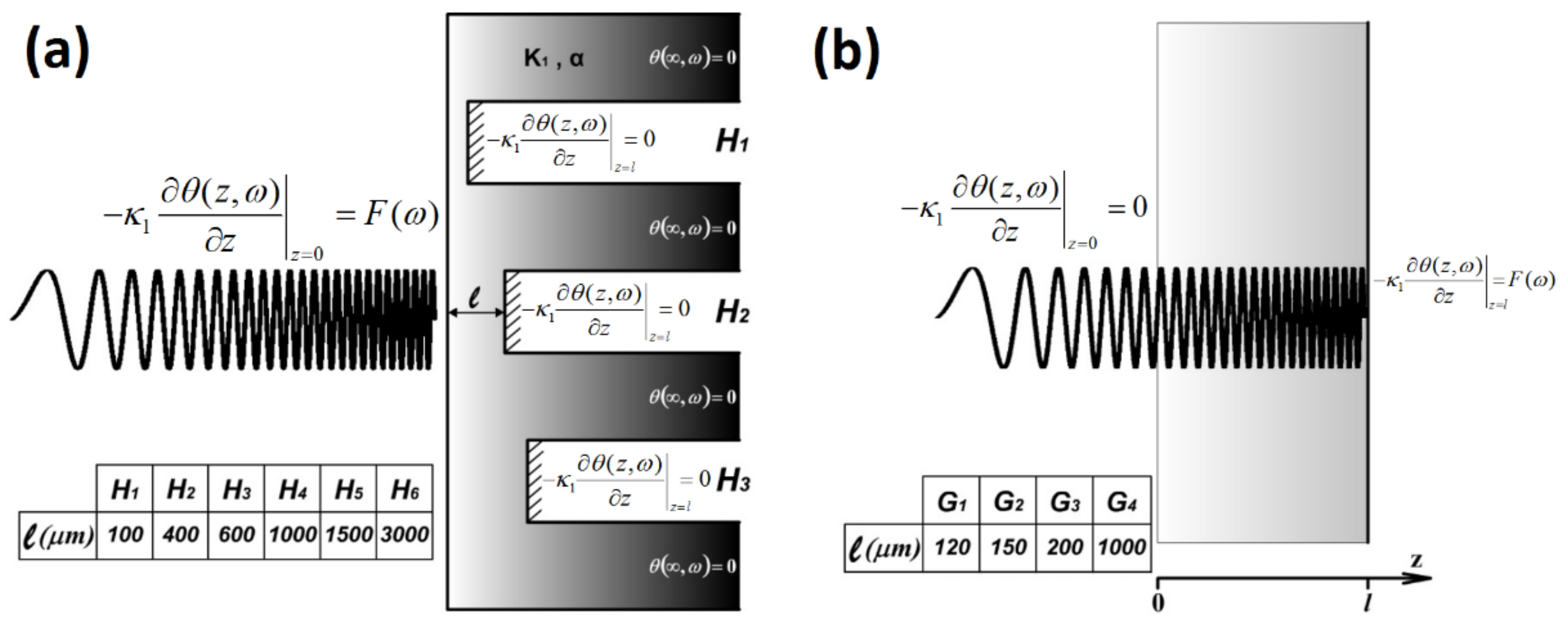

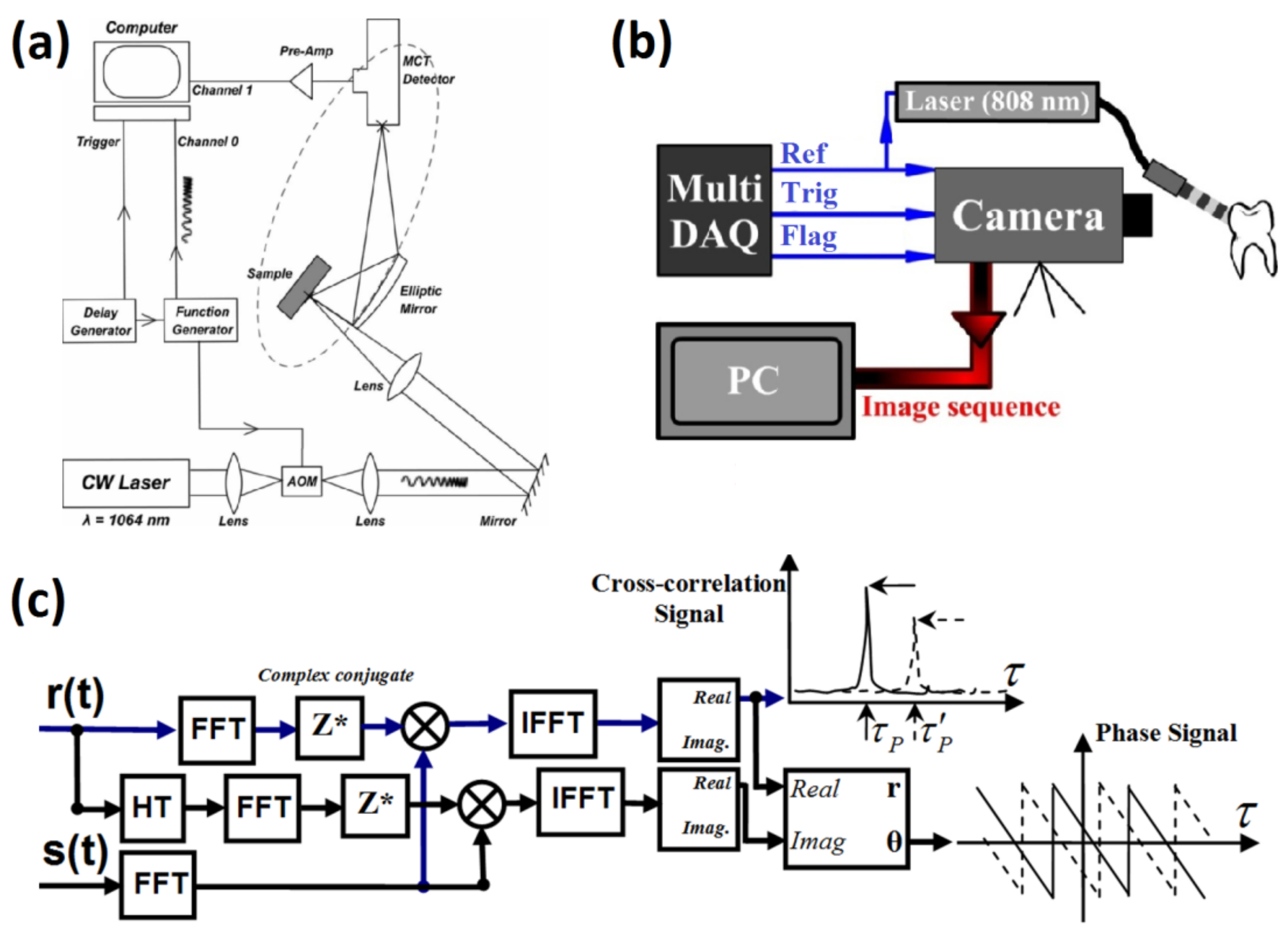
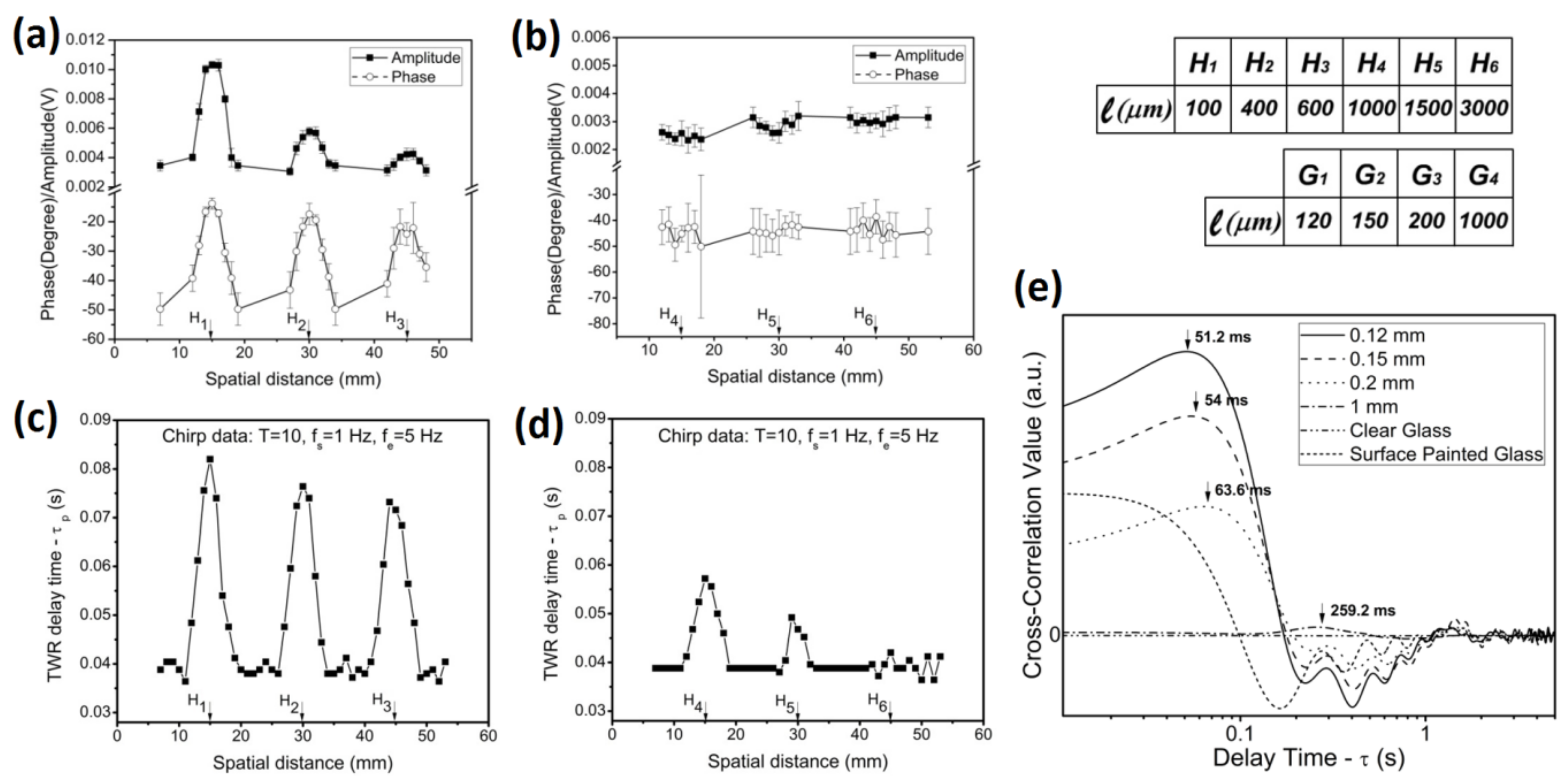
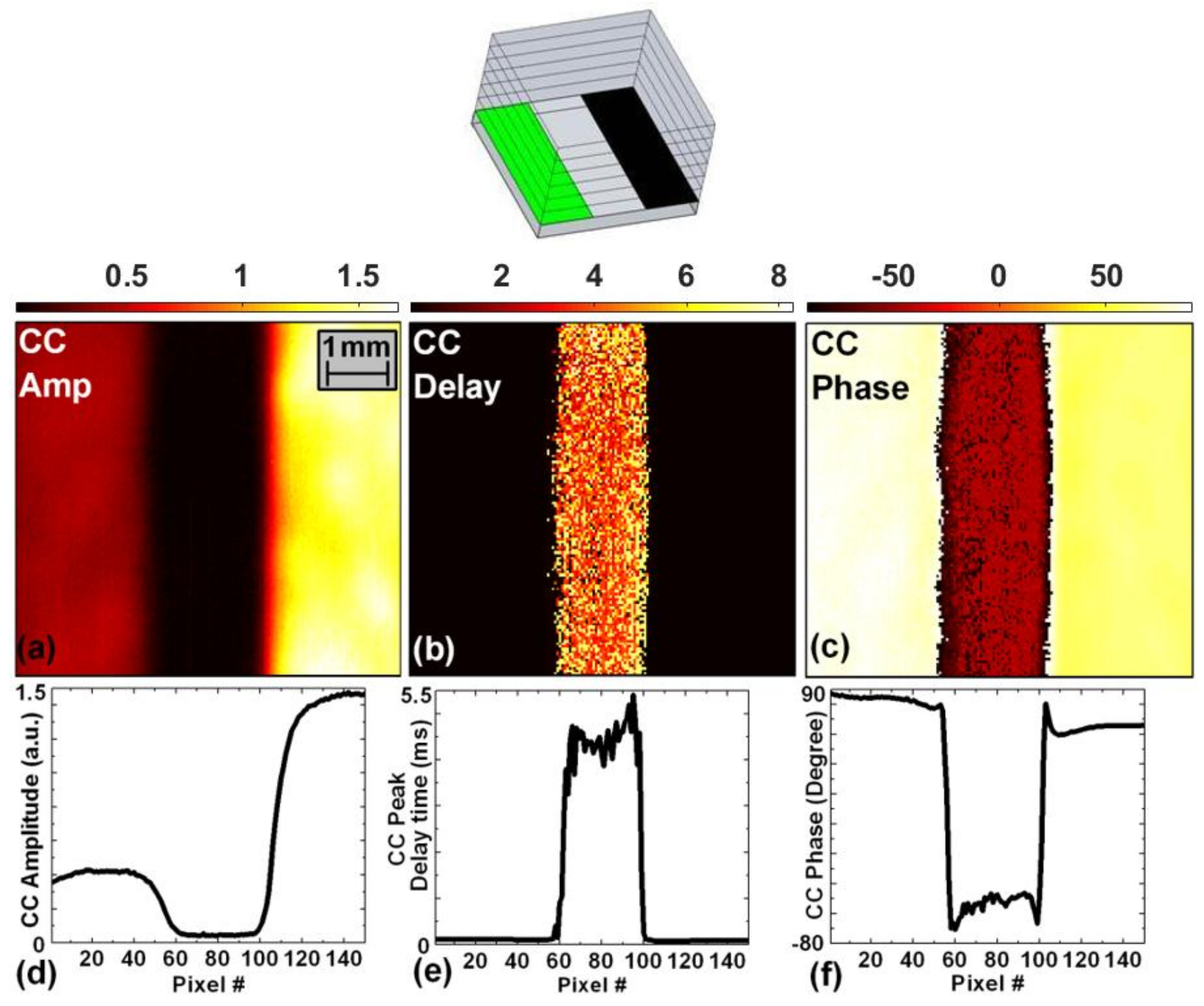
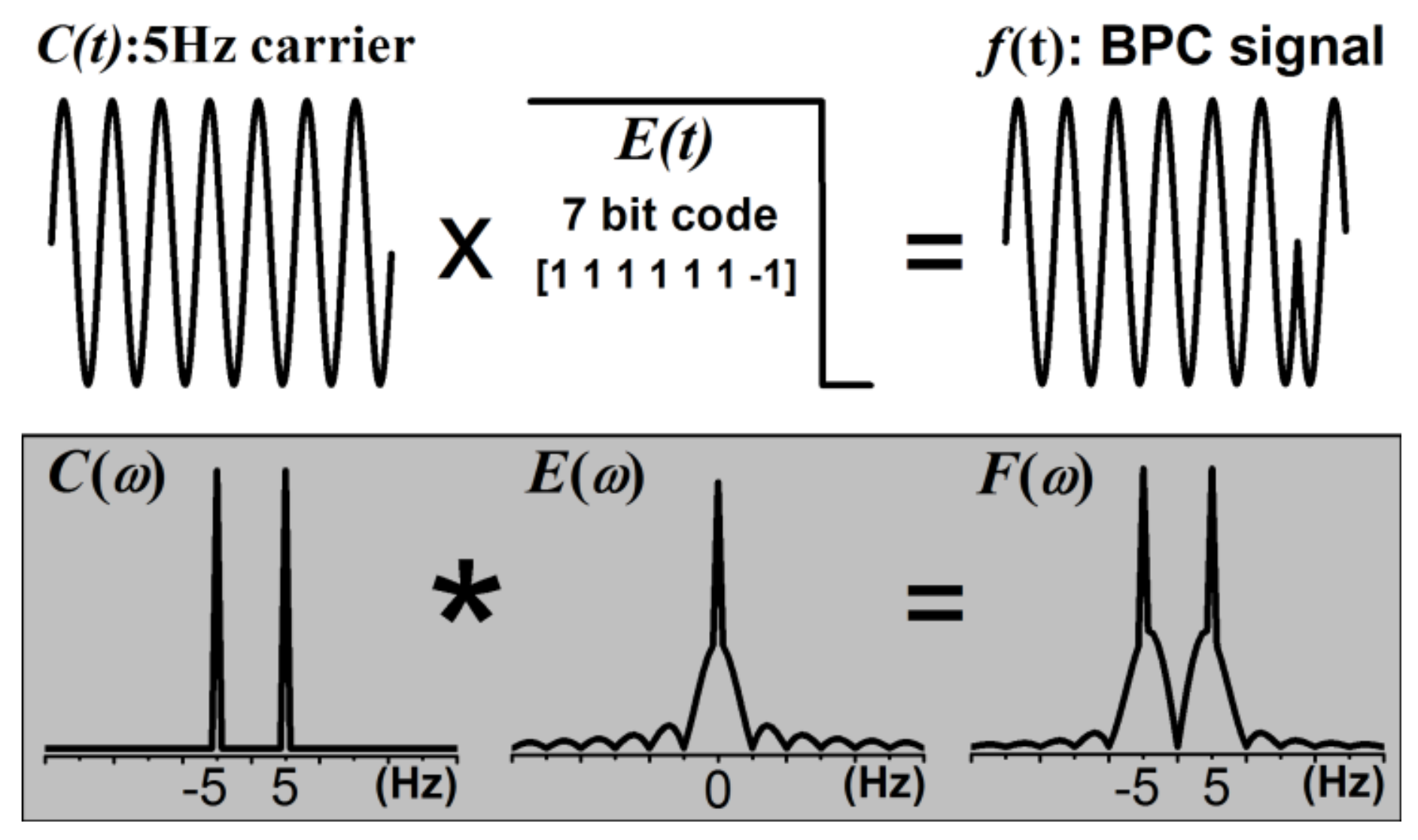

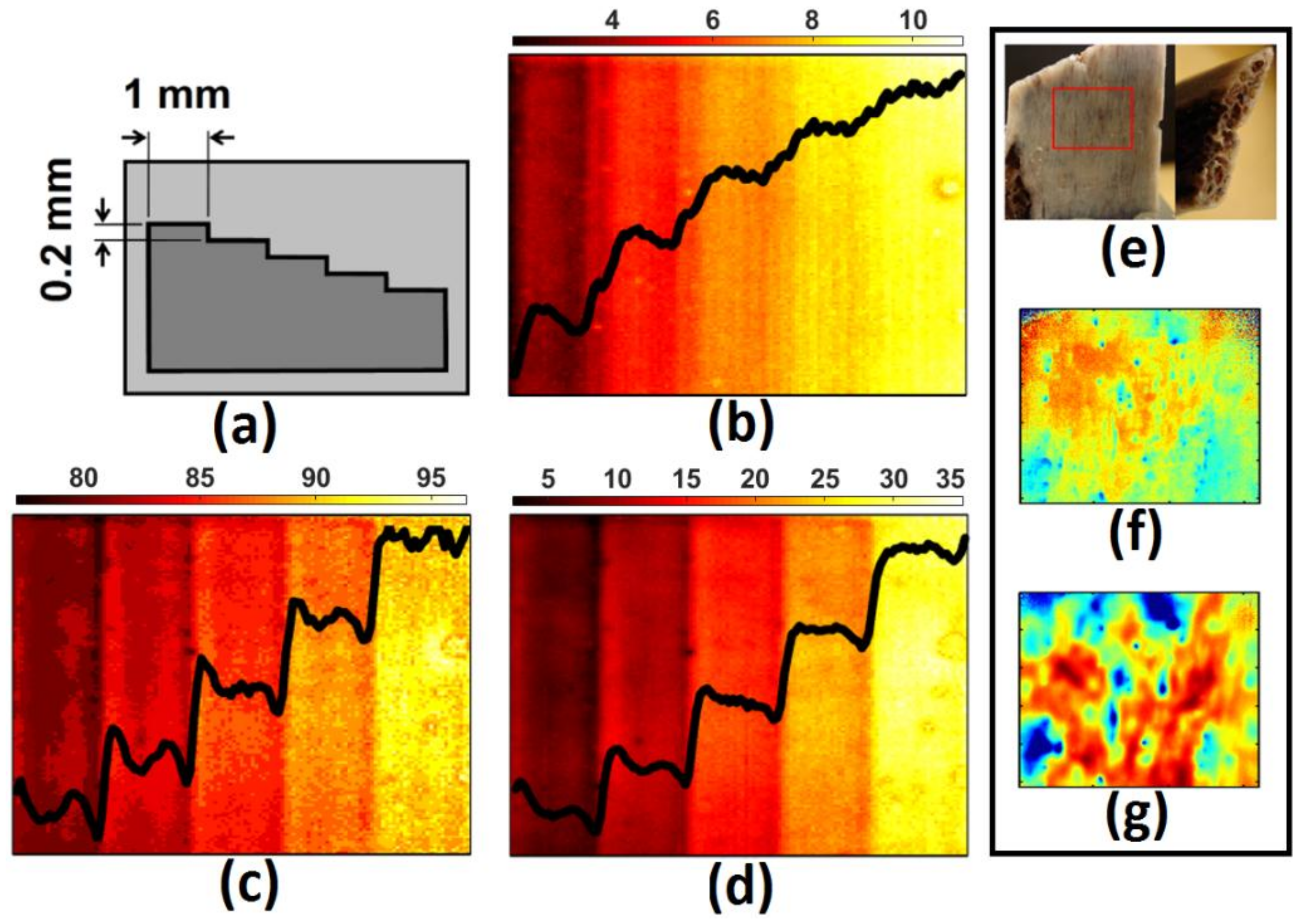

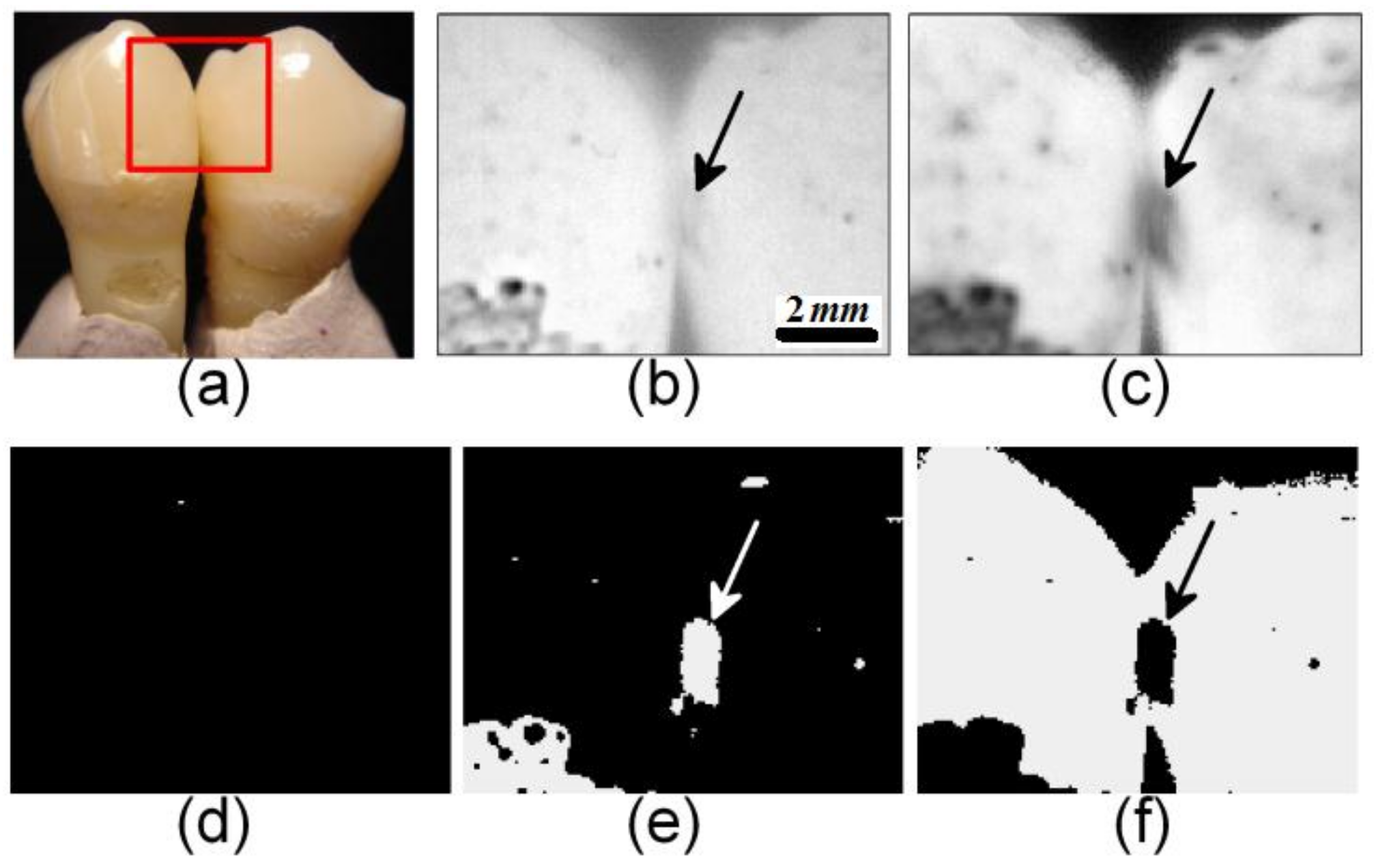
© 2018 by the authors. Licensee MDPI, Basel, Switzerland. This article is an open access article distributed under the terms and conditions of the Creative Commons Attribution (CC BY) license (http://creativecommons.org/licenses/by/4.0/).
Share and Cite
Tabatabaei, N. Matched-Filter Thermography. Appl. Sci. 2018, 8, 581. https://doi.org/10.3390/app8040581
Tabatabaei N. Matched-Filter Thermography. Applied Sciences. 2018; 8(4):581. https://doi.org/10.3390/app8040581
Chicago/Turabian StyleTabatabaei, Nima. 2018. "Matched-Filter Thermography" Applied Sciences 8, no. 4: 581. https://doi.org/10.3390/app8040581



